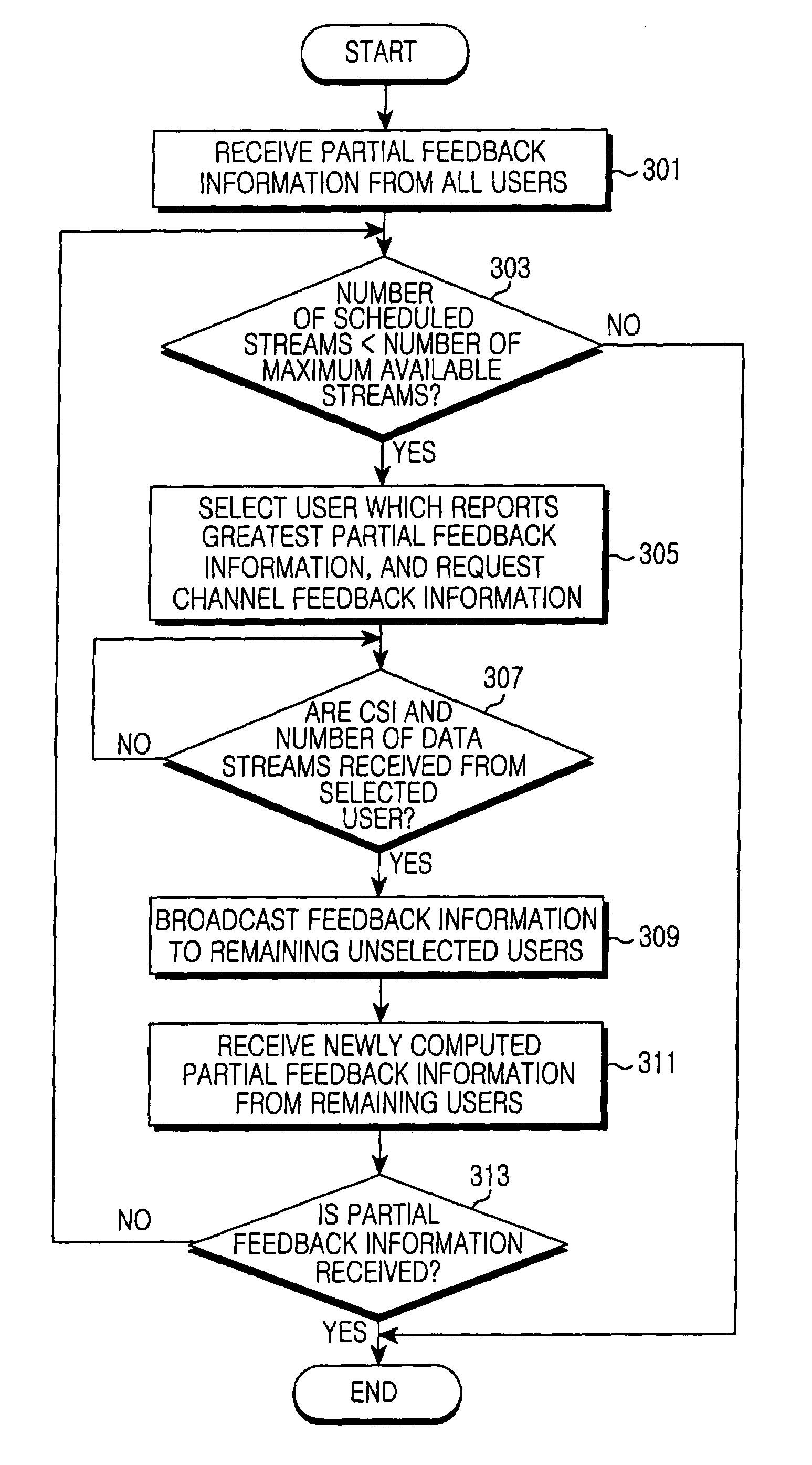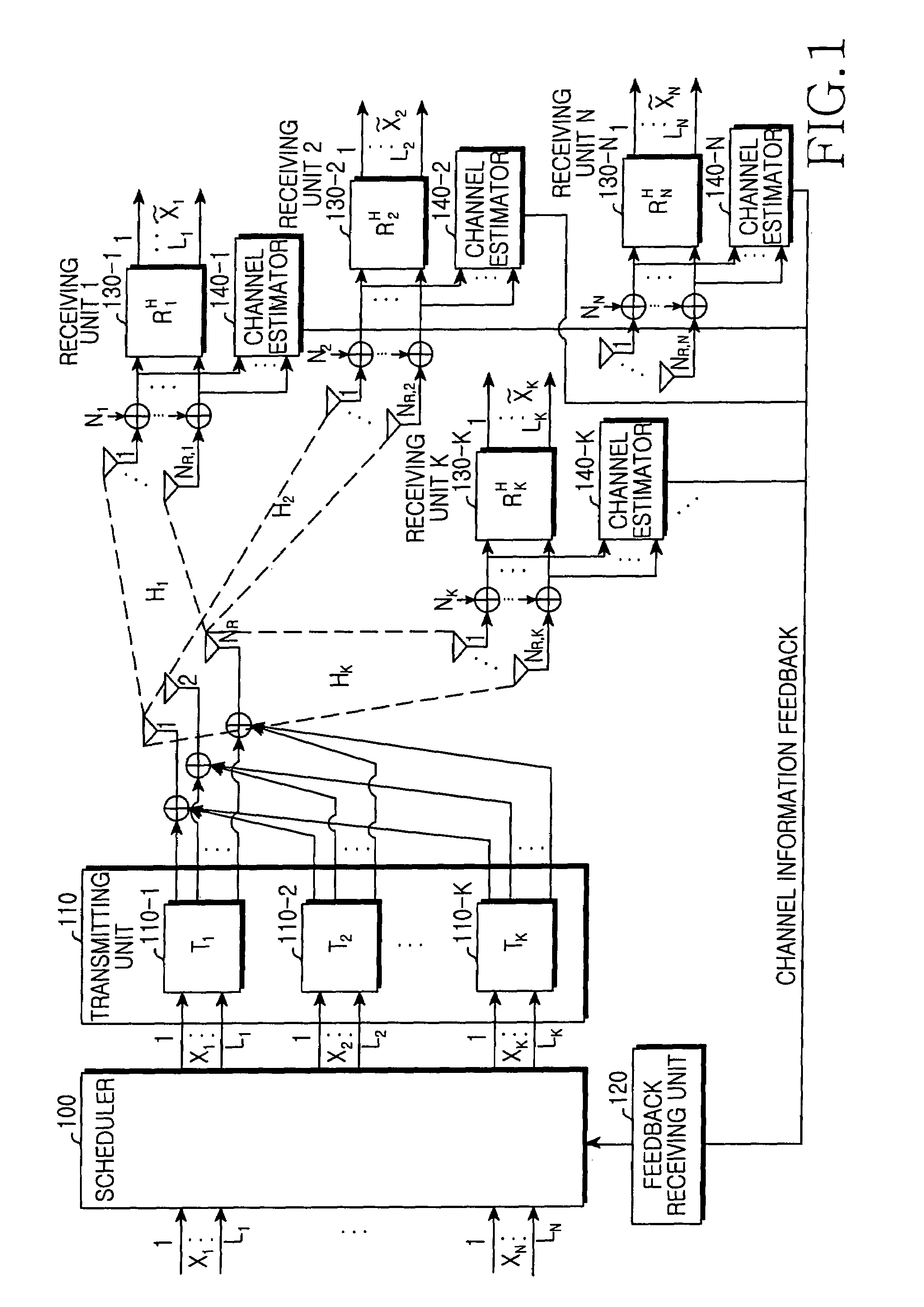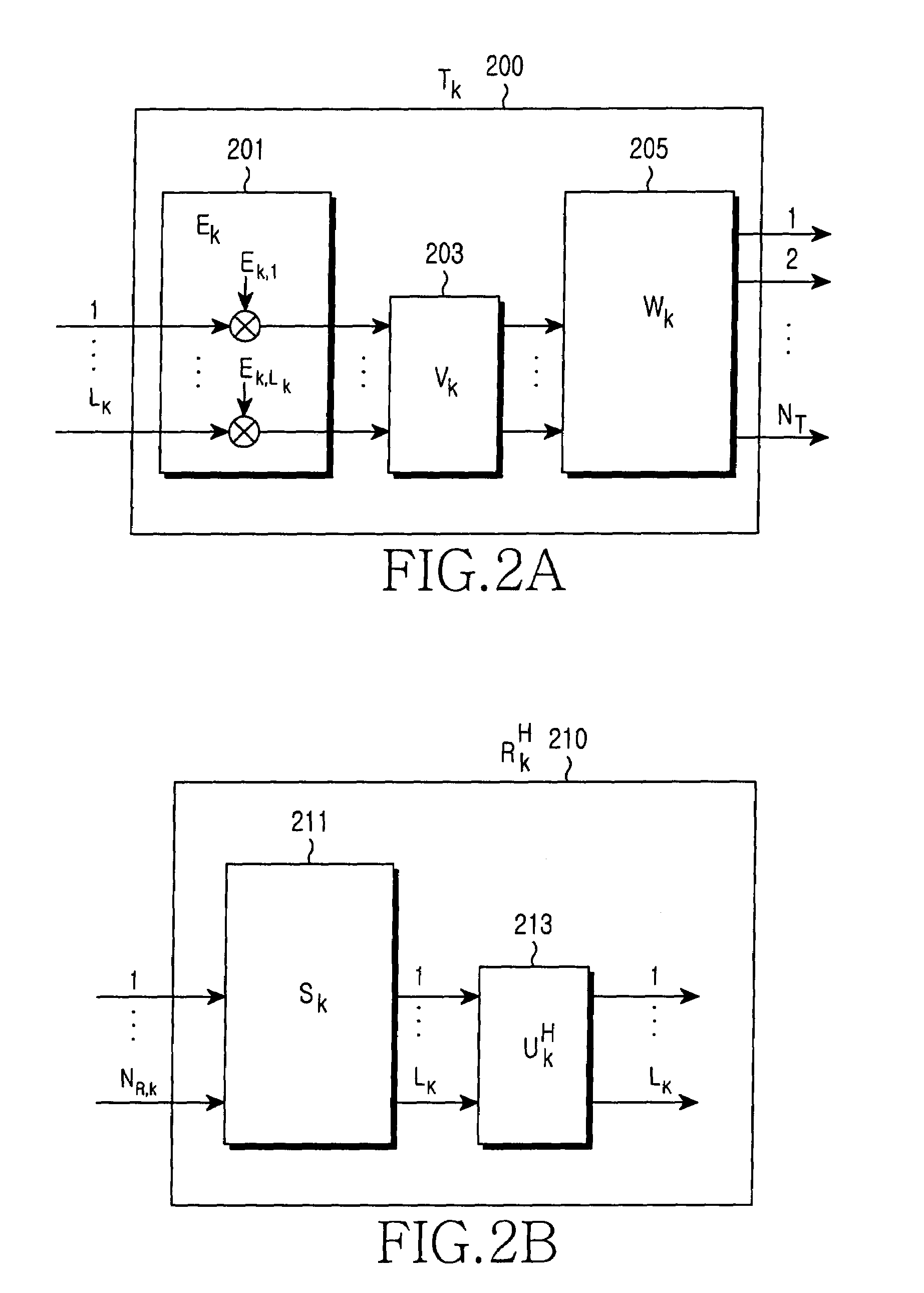Apparatus and method for performing sequential scheduling in multiple-input multiple-output system
a sequential scheduling and multi-output technology, applied in the field of apparatus and method for performing sequential scheduling in a multi-output multi-output system, can solve the problems of increasing computational complexity in the transmitter or receiver, wasting uplink resources, increasing computational complexity, etc., and reducing the amount of channel feedback. , the effect of reducing the computational complexity of the transmitter or the receiver
- Summary
- Abstract
- Description
- Claims
- Application Information
AI Technical Summary
Benefits of technology
Problems solved by technology
Method used
Image
Examples
Embodiment Construction
[0024]FIGS. 1 through 6, discussed below, and the various embodiments used to describe the principles of the present disclosure in this patent document are by way of illustration only and should not be construed in any way to limit the scope of the disclosure. Those skilled in the art will understand that the principles of the present disclosure may be implemented in any suitably arranged wireless network.
[0025]Hereinafter, a scheduling technique for minimizing the amount of channel feedback of a user and an apparatus and method for reducing a computational complexity in a transmitter or a receiver according to the scheduling technique will be described. The scheduling technique proposed in the present invention is a sequential scheduling method for selecting active users which can concurrently receive services among a plurality of users and for selecting the number of data streams for each active user.
[0026]FIG. 1 is a block diagram illustrating a structure of a transmitter / receive...
PUM
 Login to View More
Login to View More Abstract
Description
Claims
Application Information
 Login to View More
Login to View More - R&D
- Intellectual Property
- Life Sciences
- Materials
- Tech Scout
- Unparalleled Data Quality
- Higher Quality Content
- 60% Fewer Hallucinations
Browse by: Latest US Patents, China's latest patents, Technical Efficacy Thesaurus, Application Domain, Technology Topic, Popular Technical Reports.
© 2025 PatSnap. All rights reserved.Legal|Privacy policy|Modern Slavery Act Transparency Statement|Sitemap|About US| Contact US: help@patsnap.com



